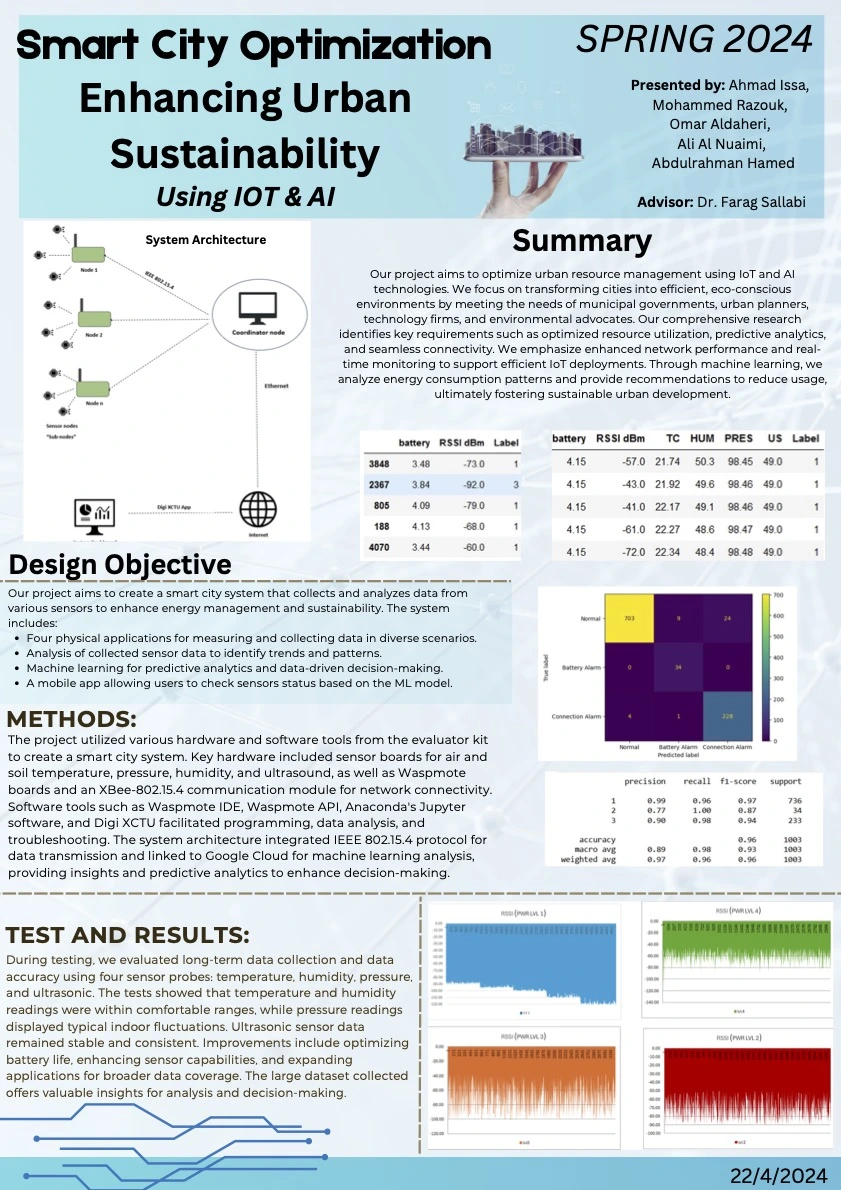This project aims to enhance urban sustainability by integrating IoT sensors and machine learning techniques
to optimize resource management in smart cities. The primary goal is to provide real-time data insights for
improving energy efficiency, monitoring environmental conditions, and supporting strategic decision-making.
Key Features
- Data Collection and Monitoring: Utilized IoT Evaluator Kits with various sensors
(temperature, pressure, humidity, and ultrasonic) to gather environmental data. Deployed sensors across
multiple locations to capture diverse metrics such as energy usage, air quality, and water levels.
- System Architecture:
- Hardware Components: ATmega1281 microcontroller, Waspmote boards, and Digi XBee
communication modules for reliable data transmission.
- Connectivity: Leveraged LR-WPAN protocols for local communication and cloud
integration for data storage and analysis.
- Machine Learning Integration: Applied machine learning models (SVMs) for predictive
analytics and anomaly detection, achieving over 96% accuracy in data classification. Enhanced
decision-making
with insights into energy consumption patterns and sensor reliability.
- Mobile Application: Developed a user-friendly interface to visualize data, enabling
seamless interaction and real-time monitoring for stakeholders.
Project Outcomes
- Optimized Resource Management: Enhanced energy efficiency and reduced environmental
impact through data-driven recommendations.
- Smart Infrastructure Deployment: Demonstrated scalability with solar-powered, low-energy
IoT devices integrated into urban environments.
- Actionable Insights: Provided stakeholders with real-time feedback to support urban
planning and sustainability goals.
This project illustrates the transformative potential of IoT and AI in building smarter, more sustainable
cities while addressing global challenges like resource depletion and climate change.
Technologies Used: HTML, CSS, JavaScript, Python, Waspmote IDE, Digi XCTU
 | Ahmad
| Ahmad
 | Ahmad
| Ahmad

